“Nourish Your Cat’s Health with the Right Food Choice!”
Introduction
Choosing the right food for your cat is an important part of being a responsible pet owner. Cats are obligate carnivores, meaning they require a diet that is high in animal-based proteins and low in carbohydrates. With so many different types of cat food available, it can be difficult to know which one is best for your pet. In this guide, we will discuss the different types of cat food, how to read labels, and what to look for when selecting the right food for your cat.
Understanding Your Cat’s Nutritional Needs: What to Look for in Cat Food
Cats are obligate carnivores, meaning that they require a diet that is rich in animal-based proteins. When selecting a cat food, it is important to look for a formula that is specifically designed to meet the nutritional needs of cats.
When evaluating a cat food, the first thing to look for is the protein content. Cats need a diet that is high in animal-based proteins, such as chicken, beef, fish, and eggs. The protein content should be listed on the label, and should be one of the first ingredients listed.
It is also important to look for a cat food that contains essential fatty acids, such as omega-3 and omega-6. These fatty acids are important for a cat’s skin and coat health, as well as for their overall health.
Cats also need a diet that is rich in vitamins and minerals. Look for a cat food that contains added vitamins and minerals, such as vitamin A, vitamin D, and taurine. These nutrients are essential for a cat’s overall health and well-being.
Finally, it is important to look for a cat food that is free from artificial colors, flavors, and preservatives. These ingredients can be harmful to cats, and should be avoided.
When selecting a cat food, it is important to look for a formula that is specifically designed to meet the nutritional needs of cats. Look for a cat food that is high in animal-based proteins, contains essential fatty acids, and is free from artificial colors, flavors, and preservatives. By following these guidelines, you can ensure that your cat is getting the nutrition they need to stay healthy and happy.
How to Read Cat Food Labels: What to Look for and What to Avoid
Reading cat food labels is an important part of ensuring your cat’s health and wellbeing. Knowing what to look for and what to avoid can help you make the best decisions for your pet.
When reading cat food labels, the first thing to look for is the list of ingredients. The ingredients should be listed in order of weight, with the heaviest ingredient listed first. Look for high-quality proteins such as chicken, beef, or fish as the first ingredient. Avoid foods that list by-products, such as animal by-products, as the first ingredient.
Next, look for the nutritional content of the food. The label should list the minimum percentages of crude protein, crude fat, and crude fiber. The food should also list the maximum percentages of moisture, ash, and calcium. The food should meet the minimum requirements for protein, fat, and fiber, and should not exceed the maximum requirements for moisture, ash, and calcium.
Finally, look for any additional information on the label. This may include information about the food’s source, such as whether it is made with human-grade ingredients or not. It may also include information about the food’s nutritional value, such as whether it is fortified with vitamins and minerals.
By taking the time to read cat food labels, you can ensure that your cat is getting the best nutrition possible. Look for high-quality proteins, meet the minimum requirements for protein, fat, and fiber, and look for additional information about the food’s source and nutritional value. Avoid foods that list by-products as the first ingredient, and foods that exceed the maximum requirements for moisture, ash, and calcium. With a little bit of research, you can make sure your cat is getting the best nutrition possible.
The Benefits of Natural and Organic Cat Food: What to Look for and What to Avoid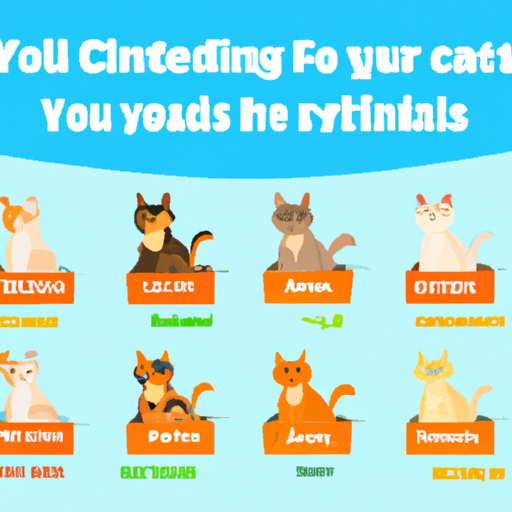
When it comes to choosing the best food for your cat, natural and organic cat food is an excellent option. Natural and organic cat food is made with high-quality ingredients that are free from artificial additives, preservatives, and fillers. This type of food is also free from hormones, antibiotics, and other potentially harmful chemicals.
When selecting natural and organic cat food, it is important to look for products that are certified organic. This certification ensures that the food has been produced in accordance with strict standards set by the United States Department of Agriculture (USDA). Additionally, look for products that are free from artificial colors, flavors, and preservatives.
It is also important to avoid foods that contain by-products, such as corn, wheat, and soy. These ingredients are often used as fillers and can be difficult for cats to digest. Additionally, avoid foods that contain artificial sweeteners, such as xylitol, as these can be toxic to cats.
When selecting natural and organic cat food, look for products that are high in protein and low in carbohydrates. Protein is essential for cats, as it helps to build and maintain muscle mass. Additionally, look for foods that contain healthy fats, such as omega-3 fatty acids, as these can help to support a healthy coat and skin.
The benefits of natural and organic cat food are numerous. Not only is it free from potentially harmful chemicals, but it is also rich in essential nutrients that can help to keep your cat healthy and happy. When selecting natural and organic cat food, look for products that are certified organic and free from artificial additives, preservatives, and fillers. Additionally, avoid foods that contain by-products, artificial sweeteners, and unhealthy fats. By following these guidelines, you can ensure that your cat is getting the best nutrition possible.
The Pros and Cons of Wet vs. Dry Cat Food: What to Consider When Choosing
When it comes to choosing the right food for your cat, there are a few important factors to consider. Wet and dry cat food both have their own unique benefits and drawbacks, so it’s important to understand the pros and cons of each before making a decision.
The primary benefit of wet cat food is that it is higher in moisture content than dry food. This is important for cats, as they are naturally prone to dehydration. Wet food also tends to be more palatable for cats, as it has a more appealing texture and smell. Additionally, wet food is often more nutrient-dense than dry food, as it contains more protein and fat.
On the other hand, dry cat food has its own advantages. It is typically more affordable than wet food, and it is also easier to store. Additionally, dry food can help keep your cat’s teeth clean, as the crunchy texture helps to remove plaque and tartar buildup.
When it comes to choosing between wet and dry cat food, there are a few things to consider. First, consider your cat’s individual needs. If your cat is prone to dehydration, wet food may be the better option. If your cat is overweight, dry food may be a better choice, as it is typically lower in calories. Additionally, consider your budget and storage space when making a decision.
Ultimately, the decision between wet and dry cat food is a personal one. Consider your cat’s individual needs, as well as your budget and storage space, when making a decision. With the right information, you can make an informed decision that is best for your cat.
The Benefits of Grain-Free Cat Food: What to Look for and What to Avoid
Grain-free cat food is becoming increasingly popular among pet owners, as it is believed to provide cats with a more natural diet. While grain-free cat food can offer many benefits, it is important to understand what to look for and what to avoid when selecting a grain-free cat food for your pet.
When selecting a grain-free cat food, it is important to look for a product that is made with high-quality ingredients. Look for a product that contains real meat as the first ingredient, as this will provide your cat with the protein they need to stay healthy. Additionally, look for a product that contains a variety of fruits and vegetables, as these provide essential vitamins and minerals. Avoid products that contain artificial colors, flavors, or preservatives, as these can be harmful to your cat’s health.
It is also important to avoid grain-free cat foods that contain high levels of carbohydrates. While carbohydrates are an important source of energy for cats, too much can lead to weight gain and other health issues. Look for a product that contains a moderate amount of carbohydrates, such as sweet potatoes, peas, and other vegetables.
Finally, it is important to look for a grain-free cat food that is formulated for your cat’s specific life stage. Kittens, for example, require a different nutritional profile than adult cats, so it is important to select a product that is specifically designed for kittens.
In conclusion, grain-free cat food can offer many benefits to your pet, but it is important to understand what to look for and what to avoid when selecting a product. Look for a product that contains high-quality ingredients, a moderate amount of carbohydrates, and is formulated for your cat’s specific life stage. Avoid products that contain artificial colors, flavors, or preservatives, as these can be harmful to your cat’s health. By following these guidelines, you can ensure that your cat is getting the nutrition they need to stay healthy and happy.
Q&A
1. What factors should I consider when choosing food for my cat?
A: When choosing food for your cat, you should consider your cat’s age, activity level, health condition, and dietary needs. Additionally, you should look for a food that is high in protein, low in carbohydrates, and contains essential vitamins and minerals.
2. What type of food is best for my cat?
A: The best type of food for your cat will depend on their individual needs. Generally, wet food is more nutrient-dense than dry food and is easier for cats to digest. However, some cats may prefer dry food. It is important to consult with your veterinarian to determine the best type of food for your cat.
3. How often should I feed my cat?
A: The frequency of feeding will depend on your cat’s age and activity level. Generally, kittens should be fed three to four times a day, while adult cats should be fed two to three times a day.
4. What ingredients should I look for in cat food?
A: When choosing cat food, look for a food that is high in protein, low in carbohydrates, and contains essential vitamins and minerals. Additionally, look for a food that is free from artificial colors, flavors, and preservatives.
5. How can I tell if my cat is getting the right nutrition?
A: You can tell if your cat is getting the right nutrition by monitoring their weight, coat condition, and energy levels. Additionally, you should consult with your veterinarian to ensure that your cat is getting the right nutrition.
Conclusion
Choosing the right food for your cat is an important decision that can have a major impact on their health and wellbeing. It is important to consider your cat’s age, activity level, and health condition when selecting a food. Additionally, it is important to read the labels on pet food to ensure that the food is of high quality and contains the necessary nutrients for your cat’s health. With the right food, your cat can live a long and healthy life.



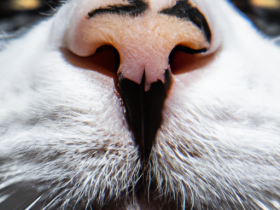
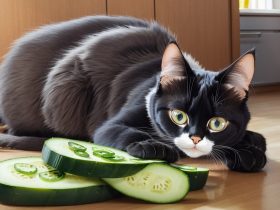
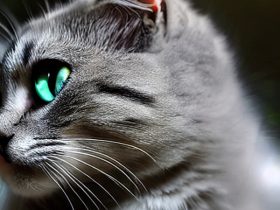

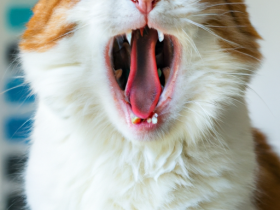
Leave a Reply
View Comments